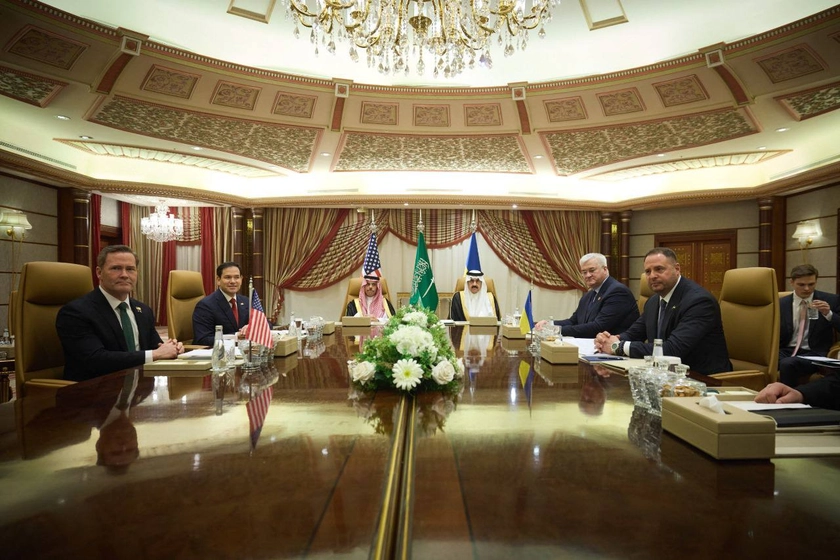In the first part of this two-part series, Kyiv Post focused on how it's possible for a country desperately in need of arms for its defense to, simultaneously, export other weapons.
In this second part, we examine the potential for Ukraine to offer weapons for export.
JOIN US ON TELEGRAM
Follow our coverage of the war on the @Kyivpost_official.
Is there a global demand for Ukrainian weapons?
Ukrainian weapons have been tested in combat conditions since 2014 – when Russia’s war on Ukraine started with the invasion of Crimea and the instigation of separatists’ rebellions in the Donbas region.
That the weapons have been successfully used in this way makes them attractive to foreign buyers.
According to the Stockholm International Peace Research Institute SIPRI, by 2015, only a year after the start of Russia’s war, Ukraine ranked ninth on the list of the largest arms exporters.
The geographic reach of Ukrainian exports was also quite wide, with customers in Europe, Africa, the Middle East, and South Asia. Ukrainian weapons manufacturers have the potential to exploit this already-established client base.
“Every year we participate in five or six major international arms exhibitions, presenting the products of enterprises as part of the National Association of Ukrainian Defense Industries (NAUDI),” the trade association’s executive director, Maksym Polyvyany said.
“Although this participation is quite expensive, we do it precisely to maintain our position in the global arms market.”

ISW Russian Offensive Campaign Assessment, March 12, 2025
Ukraine’s potential exports
Serhiy Zhurets, the director of the Defense Express information and consulting agency told Kyiv Post that Ukraine’s main export potential is in drones, radar stations, certain kinds of guided missiles and armored vehicles.
Foreign buyers at exhibitions are particularly interested in buying drones, radars, and drone-jamming Electronic Warfare (EW) equipment, he said.
“No one else has as much experience in the use of Electronic Warfare equipment. The laws of war and production work this way – if someone has a new means of destruction, then their opponent not only creates something similar, but also something counteractive. For that reason, our technologies are reaching a completely new level, constantly improving,” Zhurets said.
One of the more popular Ukrainian innovations attracting foreign interest is the Novator light armored vehicle, which was designed by Ukrainian Armor LLC in 2017 and began production in 2019. It can be configured for electronic warfare equipment, radars, guidance systems, anti-tank weapons, and more.
Ukrainian Armor is now upgrading the Novator, to give it thicker bullet-resistant windows, improved suspension and control systems.
The Bohdana self-propelled howitzer, which began development back in 2015, also has much potential.
Bohdana self-propelled howitzer.
“The birth of ‘Bohdana’ lasted seven long years. Its designers were pursued by bureaucracy, legal challenges from the Ministry of Defense, bankruptcies of contractors, and from 2022, war was added to the list [of obstacles]. A significant part of the capacity of the developer, the Kramatorsk Heavy Machine Tool Construction Plant (KZVV), was destroyed as a result of missile strikes,” Economichna Pravda wrote last December.
But the Bohdana was able to weather the storm.
Economichna Pravda reported in December that 30 of the 155mm-caliber artillery vehicles had been assembled and that Ukrainian manufacturers are now producing six of them per month with plans for more – including a towed version. They will likely play an increasingly important role in the Russo-Ukrainian War, as well as, eventually, having export potential.
R-360 Neptune missile complex.
Ukrainians are also scaling up the production of the R-360 Neptune cruise missile, which was used to sink the Moskva, the flagship of Russia’s Black Sea Fleet in April 2022.
The Neptune, which was designed by the Luch Design Bureau in Kyiv as an anti-ship missile, developed from the Soviet Kh-35 anti-ship missile but with an improved range, able to hit targets at up to 300 kilometers (190 miles).
According to an April 16 report by navyrecognition.com, Ukraine plans to expand the Neptune’s operational range to 1000 kilometers (620 miles) and expand its production tenfold.
What private weapons makers want
“Now, to get an export permit, you need a certificate from the defense ministry that these products are not in demand,” Zhurets said.
“However often some products are needed on paper but haven’t, in reality, been ordered for years. In other words, this bureaucracy that creates obstacles must be eliminated. This requires a political decision – that we can export what is not bought by the state. For us, getting currency through the sale of weapons is just as important as making these weapons for the army.”
NAUDI also calls for the state, which is more focused on public sector development, to further support the private sector.
“According to the statistics of purchases of the Ministry of Defense, today the first violin in the industry is played by private enterprises, which fulfill about 70-80 percent of State defense orders,” Polyvyany said.
NAUDI is lobbying for Kyiv to set up a program of a low-interest loans in the range of 5 to 9 percent for private Ukrainian weapons manufacturers.
“Also important is the consistency of the state’s defense order – for at least three years in advance. Then producers will be able to expand production, take out loans, and attract foreign investors. If there is no confidence that the products will be needed in the near future, planning is impossible,” he said.
You can also highlight the text and press Ctrl + Enter













